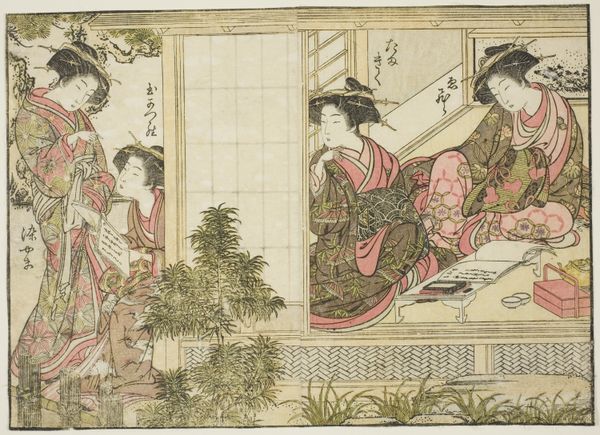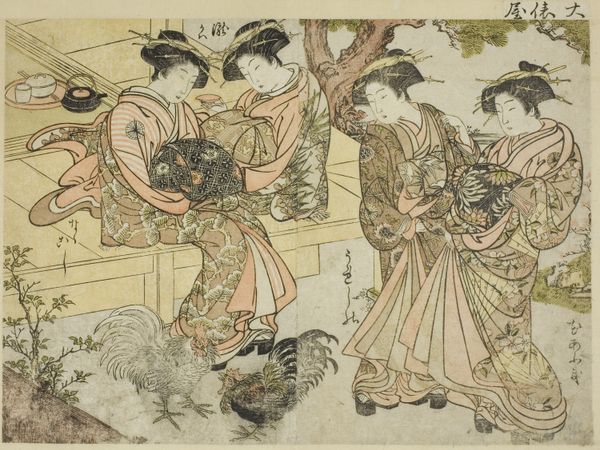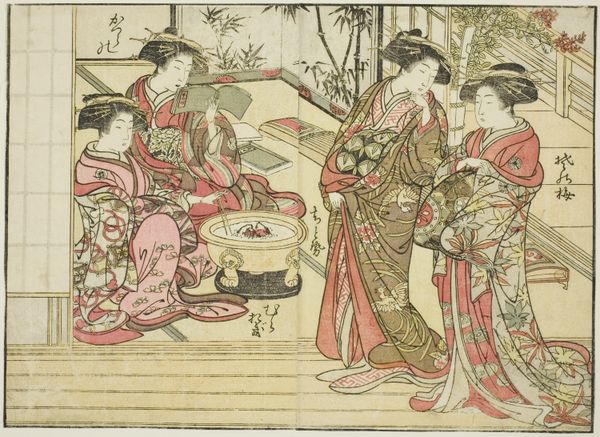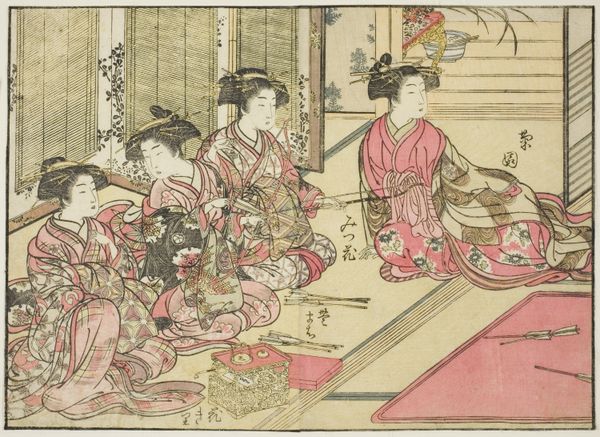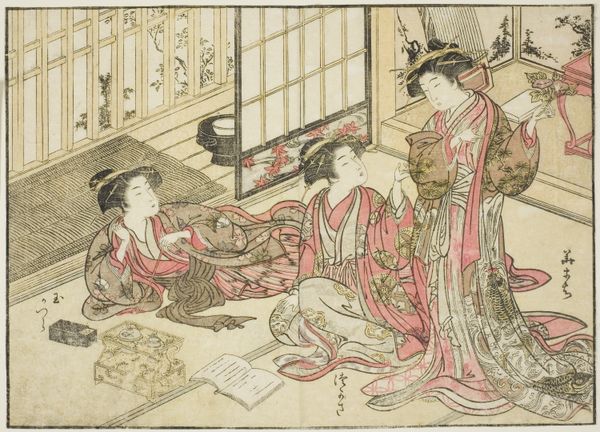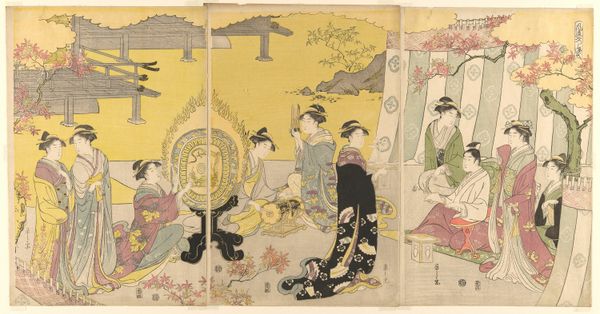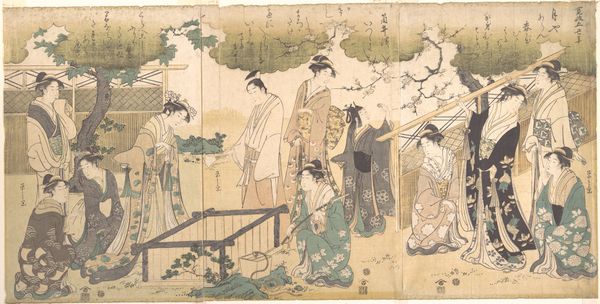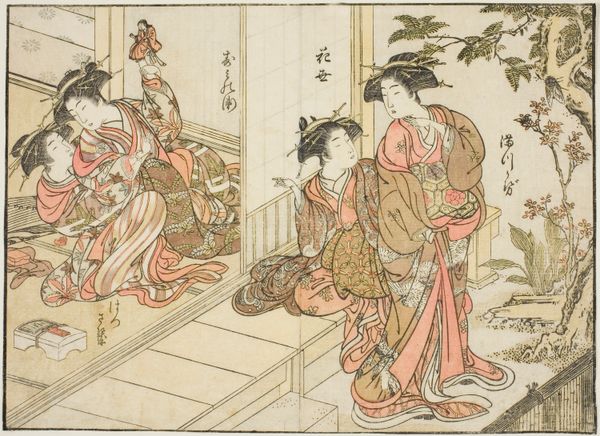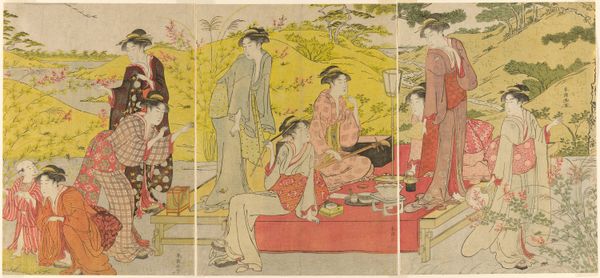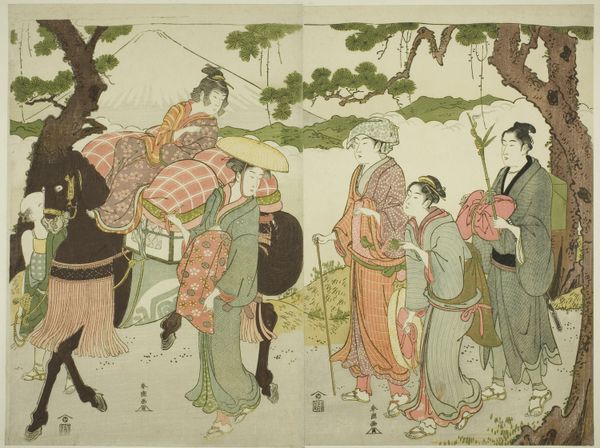
Courtesans of Otawaraya, from the book "Mirror of Beautiful Women of the Pleasure Quarters (Seiro bijin awase sugata kagami)," vol. 2 1776
0:00
0:00
print, woodblock-print
#
portrait
# print
#
asian-art
#
ukiyo-e
#
woodblock-print
#
genre-painting
Dimensions: 8 7/8 × 11 7/8 in.
Copyright: Public Domain
Curator: Welcome. Here we see Kitao Shigemasa’s "Courtesans of Otawaraya, from the book 'Mirror of Beautiful Women of the Pleasure Quarters,'" created around 1776. Shigemasa was a leading printmaker of his time. What's your initial impression of this ukiyo-e woodblock print? Editor: It has a lovely domestic intimacy, even with four figures depicted. The pastel shades and careful organization suggest tranquility, almost melancholy, despite its setting in the pleasure district. Curator: Precisely! Observe how the artist deploys spatial organization. The figures create both depth and surface interest. Note the geometric composition; the planes are flat but create perspective. The negative space surrounding the figures defines their shapes, while also subtly compartmentalizing them within a communal setting. Editor: It also highlights the confinement within the pleasure quarters. These women were commodities and bound by many constraints. That cage on the top right reinforces it. It mirrors their gilded existence; beautiful but limited, much like prized birds kept for display. Curator: You draw an insightful parallel. What is interesting is how the print manages to simultaneously portray their social position, yet offers a glimpse into the personal sphere: The elaborate kimonos signal status. However, there is the presence of everyday acts—examining cosmetics, conversing, perhaps pausing from a game, surrounded by the accoutrements of life, which humanizes them. Editor: These subtle acts, and how they’re positioned give some kind of empowerment to them, doesn't it? The details emphasize their individuality, but one cannot ignore the implications. Does it somehow serve to romanticize and normalize their circumstances? Is that not what the gaze has traditionally served to do in the depiction of women, or am I missing a critical dimension of artistry in this instance? Curator: Those are necessary questions. By the Meiji era, there would be direct Western influence in art and by implication social ideas about beauty; there would eventually be those that would embrace that change and others not. We see both taking hold around this time period. Ultimately it lies with us as beholders to consider this in total as historical commentary rather than the personal experience, especially knowing these courtesans were public figures but also marginalized individuals within society at large during this moment and onward throughout Japanese history Editor: A valuable distinction, prompting continued reflection. Thank you. Curator: My pleasure. An art experience, like life, must always ask and answer anew.
Comments
No comments
Be the first to comment and join the conversation on the ultimate creative platform.
